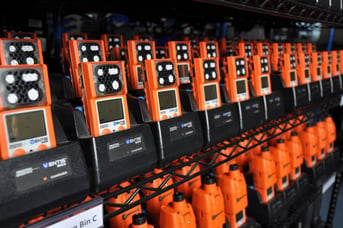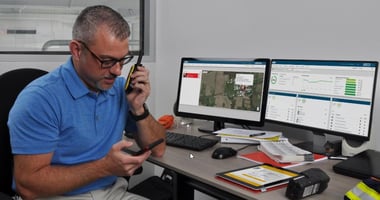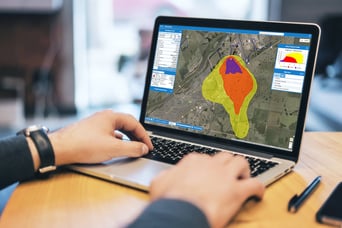As workplace safety cultures continue to expand and evolve, instant visibility into safety, efficiency, and much more should be the primary goal of any modern solution. Visibility into the hazards faced by workers allows safety managers to be proactive and avoid risk.
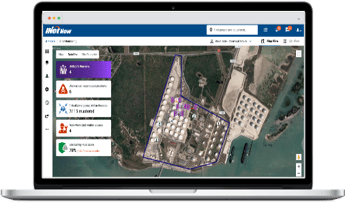 With this goal, it’s no surprise that businesses in industrial environments are turning toward updated software solutions like the iNet Safety Platform to help achieve their safety goals. As software that connects seamlessly with a businesses’ hardware solutions can offer real-time alerts and analytics that help improve safety, reduce risk, and boost productivity.
With this goal, it’s no surprise that businesses in industrial environments are turning toward updated software solutions like the iNet Safety Platform to help achieve their safety goals. As software that connects seamlessly with a businesses’ hardware solutions can offer real-time alerts and analytics that help improve safety, reduce risk, and boost productivity.
Even if your team of safety professionals have already applied a software solution like this in the workplace, you can maximize its impact on your safety culture with a few simple steps.
The Impact on Your Business
Although American workplaces are safer than they have ever been, workers are still sustaining significant injuries while on the clock. According to the Bureau of Labor Statistics, 5,333 workers died on the job in 2019. This is, on average, more than 100 fatalities per week or about 15 fatalities every day.
These incidents can wreak havoc on your budget, resulting in losses from decreased productivity. There are also hospital bills, workers’ compensation payments, and other expenses to account for.
Injuries are also often examined by occupational health and safety inspectors. This can result in penalties ranging from $13,260 to $132,598 for each non-compliance occurrence. In 2018 alone, businesses accumulated $52.4 billion in wage and productivity losses, according to the National Safety Council. These costs add up, making any worker injury or illness quite expensive.
By ensuring your organization has a software solution that connects seamlessly with your hardware solutions, you can help protect both your bottom line and workers.
For example, a complete safety solution includes pairing gas detectors like the Ventis® Pro5 with cloud-based experiences like iNet Control that offer real-time site analytics and worker status updates. This gives safety managers the awareness to reduce risk and manage productivity while also maximizing your return on investment.
Executives, meanwhile, can also access these analytics to get a high-level overview of site safety and productivity. However, simply having these software options in place isn’t going to add value if your workers aren’t properly and regularly trained on how to use the gas detection equipment.
The Impact on Your Employees
Although significant consequences are reason enough to adopt a hands-on, software approach to safety and health performance, nothing should top the desire to protect employees. Workers are the lifeblood of the business, and their value as people who leave the worksite everyday reminds us of the importance of high safety culture, protecting the lives of those we love.
Companies should do everything in their power to ensure every worker returns home at the end of the day, alive and unharmed. In addition to the efficiency and financial benefits, building a safer workplace satisfies an innate morality to product human life.
Advantages of a Software-Focused Safety Culture
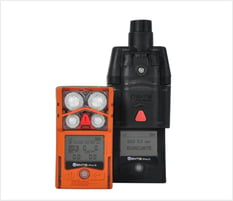 Every safety culture is different, but if your safety program includes both gas detection and software products that give real-time insight to the right person at the right time, it can help you find gaps in your process, make you more efficient, make people safer, and help to prevent major events like gas leaks or explosions – which at the end of the day can help operations, financials, and more.
Every safety culture is different, but if your safety program includes both gas detection and software products that give real-time insight to the right person at the right time, it can help you find gaps in your process, make you more efficient, make people safer, and help to prevent major events like gas leaks or explosions – which at the end of the day can help operations, financials, and more.
You can have the best gas detection setup in the world, but it will only impact safety. To impact things like organizational efficiency or to help prevent catastrophic emergencies, you need the right hardware for the job, but also the associated software. With this combination in place, you can:
1. Inform Your Workers
In industrial environments, emergencies happen—and when they do, every second matters. By using the right gas detector for the job with its associated software, such as peer-to-peer connected devices, you can ensure that those in danger can rely on other workers nearby for help.
Rather than guessing what to do when a gas monitor goes into alarm, peers get the information they need to act fast without putting themselves in danger, too. Whether a gas hazard, man-down, or panic situation causes an instrument to alarm, all peers in the connected group will instantly know who is in danger and why. This leads to better safety outcomes for individual workers, the team, and the organization.
2. Get the Data You Need
Connecting your workforce with the appropriate software allows you to aggregate gas detection data to identify high-priority maintenance or repairs, recognize trends, and reduce overall risk. All these data points make it much easier to make informed decisions that help you boost the effectiveness of your program.
For example, repeated low-level gas exposures in a certain location on your site can help you discover and resolve problem areas before they impact worker safety. Visual summaries of gas alarms make it easy to identify and fix a low-level gas leak that you otherwise might not have noticed until concentrations reached alarm-threshold levels. Over time, continuously using these data points to address problem areas will improve the efficacy of your safety program.
3. Receive Instant Updates
Real-time knowledge of each worker’s location and environment is essential in industrial environments, especially in the event of a gas release. Gas monitors with live monitoring tools, like some personal multi-gas monitors and area monitors, can automatically alert safety contacts via text or email when a worker encounters a gas hazard, falls, or experiences any other emergency.
At the same time, peer-to-peer mesh networks can alert workers nearby so they can take appropriate action. Both live monitoring and peer-to-peer connectivity take the burden of communication off the worker in danger. Alerts are shared automatically, allowing everyone to act quickly.
4. Rely on Real-Time Monitoring
You can’t always be available to respond to worker alarms like gas exposure and panic or man-down alerts when their hours are irregular or no one else is on site. A real-time response monitoring service can help cover gaps in your safety team without sacrificing the safety of your workers. Even if supervisors miss an alert or are inaccessible, your workers can have peace of mind knowing that agents will pursue help immediately.
When a worker's gas monitor detects dangerous conditions, a response center agent can immediately take action, following your custom response plan until they can confirm that the worker is safe and stakeholders are notified.
You can configure your escalation plan based on your company policy and alarm type to ensure that the proper follow-up occurs. With a call center team to back you up using automatic data sharing, you can be confident that incidents will be pursued until your team is safe.
5. Reduce Risk
With real-time information on safety challenges your workers face, you can follow up on incidents in minutes or count on an agent to escalate the situation until help arrives. When a situation arises, both you and your workers will have the information needed to react quickly and appropriately.
After the fact, data gathered from the event offers insight into how you can improve your facility’s safety response in the future. Overall, connecting your workforce allows you to use data and insights to make smarter safety decisions and ultimately reduce your facility’s operational risk and thus improve profitability.
Software-Focused Safety Culture in Action
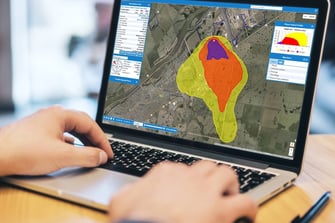 Software experiences embedded within safety culture, allows for the expansion or your safety portfolio to include things like hardware connectivity tests, plume modeling, 24/7 support, fall reports, heat stress, and much more. If an event does occur, you can easily identify where your people were when it happened. But you can also do a retrospective on what happened and why and change your processes for the next time – ensuring it doesn’t happen again.
Software experiences embedded within safety culture, allows for the expansion or your safety portfolio to include things like hardware connectivity tests, plume modeling, 24/7 support, fall reports, heat stress, and much more. If an event does occur, you can easily identify where your people were when it happened. But you can also do a retrospective on what happened and why and change your processes for the next time – ensuring it doesn’t happen again.
After a recent explosion, for example, one company was able to quickly identify the hazardous gases leaving their site, act accordingly, and keep local emergency responders aware of the situation thanks to SAFER One®.
The next morning, the company needed additional equipment to better control the situation and aid in emergency response. By adding additional software options, such as live monitoring, and compatible gas detectors, the company was able to upgrade their current safety protocols to continue to address the situation with more software insights beyond plume modeling, such as where employees were, who was being impacted, and more.
Beyond previous examples, having a robust software culture can help design engineers and other members of your organization with their projects. In this instance, let’s pretend the design engineers are building a new section for your facility that might house four tanks of Chlorine and an open flame. By using robust gas detection software, plume modeling programs, and more, they can run scenarios to determine the right height for each tank, as well as the flame. This can help determine that the new addition will run efficiently, as well as aids in long-term safety for the plant and its workers.
Learn more about Industrial Scientific’s connected software solutions by speaking to an expert.
